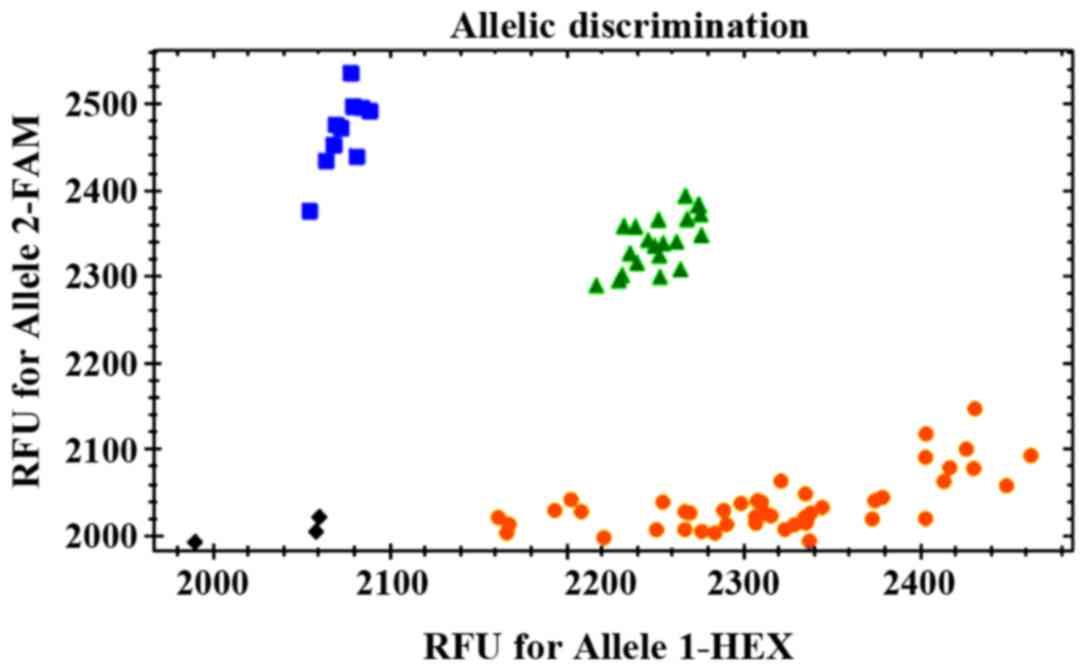|
1
|
Kanna RM, Shetty AP and Rajasekaran S:
Patterns of lumbar disc degeneration are different in degenerative
disc disease and disc prolapse magnetic resonance imaging analysis
of 224 patients. Spine J. 14:300–307. 2014. View Article : Google Scholar : PubMed/NCBI
|
|
2
|
Colombier P, Clouet J, Hamel O, Lescaudron
L and Guicheux J: The lumbar intervertebral disc: From embryonic
development to degeneration. Joint Bone Spine. 81:125–129. 2014.
View Article : Google Scholar : PubMed/NCBI
|
|
3
|
Ma T, Guo CJ, Zhao X, Wu L, Sun SX and Jin
QH: The effect of curcumin on NF-κB expression in rat with lumbar
intervertebral disc degeneration. Eur Rev Med Pharmacol Sci.
19:1305–1314. 2015.PubMed/NCBI
|
|
4
|
Zheng CJ and Chen J: Disc degeneration
implies low back pain. Theor Biol Med Model. 12:242015. View Article : Google Scholar : PubMed/NCBI
|
|
5
|
Li YF, Tang XZ, Liang CG, Hui YM, Ji YH,
Xu W, Qiu W and Cheng LM: Role of growth differentiation factor-5
and bone morphogenetic protein type II receptor in the development
of lumbar intervertebral disc degeneration. Int J Clin Exp Pathol.
8:719–726. 2015.PubMed/NCBI
|
|
6
|
Eskola PJ, Lemmelä S, Kjaer P, Solovieva
S, Männikkö M, Tommerup N, Lind-Thomsen A, Husgafvel-Pursiainen K,
Cheung KM, Chan D, et al: Genetic association studies in lumbar
disc degeneration: A systematic review. PLoS One. 7:e499952012.
View Article : Google Scholar : PubMed/NCBI
|
|
7
|
Williams FM, Popham M, Hart DJ, de
Schepper E, Bierma-Zeinstra S, Hofman A, Uitterlinden AG, Arden NK,
Cooper C, Spector TD, et al: GDF5 single-nucleotide polymorphism
rs143383 is associated with lumbar disc degeneration in Northern
European women. Arthritis Rheum. 63:708–712. 2011. View Article : Google Scholar : PubMed/NCBI
|
|
8
|
Reynard LN, Bui C, Syddall CM and Loughlin
J: CpG methylation regulates allelic expression of GDF5 by
modulating binding of SP1 and SP3 repressor proteins to the
osteoarthritis susceptibility SNP rs143383. Hum Genet.
133:1059–1073. 2014. View Article : Google Scholar : PubMed/NCBI
|
|
9
|
Mu J, Ge W, Zuo X, Chen Y and Huang C:
Analysis of association between IL-1β, CASP-9, and GDF5 variants
and low-back pain in Chinese male soldier: Clinical article. J
Neurosurg Spine. 19:243–247. 2013. View Article : Google Scholar : PubMed/NCBI
|
|
10
|
Deng B, Ren JZ, Meng XQ, Pang CG, Duan GQ,
Zhang JX, Zou H, Yang HZ and Ji JJ: Expression profiles of MMP-1
and TIMP-1 in lumbar intervertebral disc degeneration. Genet Mol
Res. 14:19080–19086. 2015. View Article : Google Scholar : PubMed/NCBI
|
|
11
|
Wei F, Zhong R, Wang L, Cui S, Liu S, Zou
X, Zhou Z and Liang Z: Relationship between bone mineral density
and lumbar intervertebral disc degeneration in rhesus macaques.
Zhongguo Xiu Fu Chong Jian Wai Ke Za Zhi. 28:718–722. 2014.(In
Chinese). PubMed/NCBI
|
|
12
|
Gologorsky Y and Chi J: Genetic
predisposition to lumbar disc degeneration. Neurosurgery.
74:N10–N11. 2014. View Article : Google Scholar : PubMed/NCBI
|
|
13
|
Zhou H, Zhu F, Qiu Y, Zhu Z, Liu Z, Bao H,
He S and Qiao J: Effect of intervertebral disc degeneration on
spinal flexibility in patients with degenerative lumbar scoliosis.
Zhonghua Wai Ke Za Zhi. 52:739–744. 2014.(In Chinese). PubMed/NCBI
|
|
14
|
Syddall CM, Reynard LN, Young DA and
Loughlin J: The identification of trans-acting factors that
regulate the expression of GDF5 via the osteoarthritis
susceptibility SNP rs143383. PLoS Genet. 9:e10035572013. View Article : Google Scholar : PubMed/NCBI
|
|
15
|
Pan F, Tian J, Winzenberg T, Ding C and
Jones G: Association between GDF5 rs143383 polymorphism and knee
osteoarthritis: An updated meta-analysis based on 23,995 subjects.
BMC Musculoskelet Disord. 15:4042014. View Article : Google Scholar : PubMed/NCBI
|
|
16
|
Yin Y and Wang Y: Association of BMP-14
rs143383 ploymorphism with its susceptibility to osteoarthritis: A
meta-analysis and systematic review according to PRISMA guideline.
Medicine (Baltimore). 96:e74472017. View Article : Google Scholar : PubMed/NCBI
|
|
17
|
Tsezou A: Osteoarthritis year in review
2014: Genetics and genomics. Osteoarthritis Cartilage.
22:2017–2024. 2014. View Article : Google Scholar : PubMed/NCBI
|
|
18
|
Huétink K, van der Voort P, Bloem JL,
Nelissen RG and Meulenbelt I: Genetic contribution to the
development of radiographic knee osteoarthritis in a population
presenting with nonacute knee symptoms a decade earlier. Clin Med
Insights Arthritis Musculoskelet Disord. 9:57–63. 2016. View Article : Google Scholar : PubMed/NCBI
|
|
19
|
Ratnayake M, Plöger F, Santibanez-Koref M
and Loughlin J: Human chondrocytes respond discordantly to the
protein encoded by the osteoarthritis susceptibility gene GDF5.
PLoS One. 9:e865902014. View Article : Google Scholar : PubMed/NCBI
|
|
20
|
Mu J, Ge W, Zuo X, Chen Y and Huang C: A
SNP in the 5′UTR of GDF5 is associated with susceptibility to
symptomatic lumbar disc herniation in the Chinese Han population.
Eur Spine J. 23:498–503. 2014. View Article : Google Scholar : PubMed/NCBI
|















